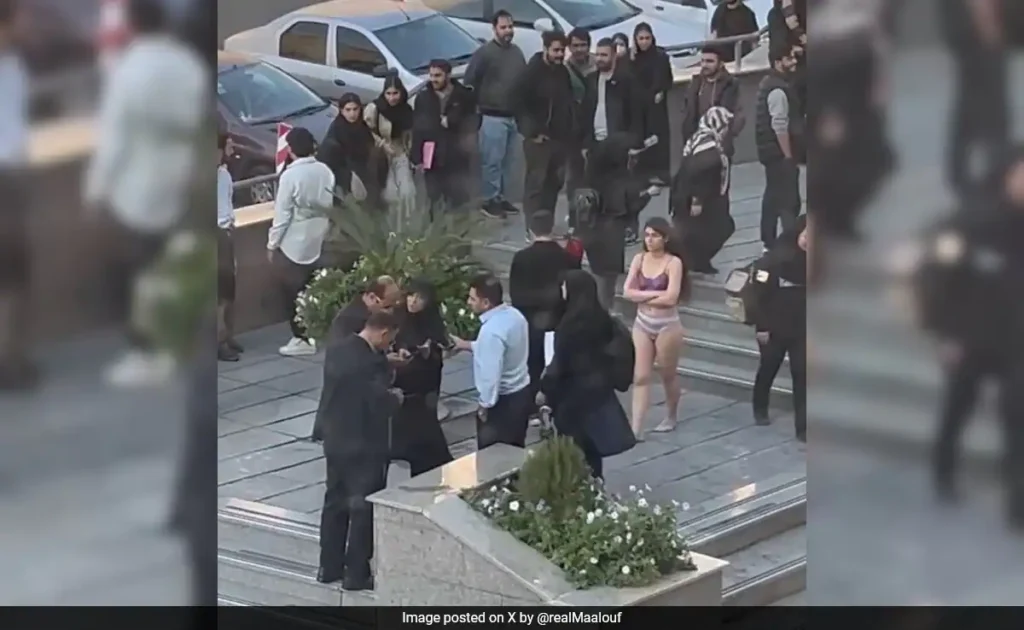Student Arrest Sparks Iran Hijab Protests
Iran Student Arrested After Hijab Protest
On November 2, a female student at Islamic Azad University in Tehran, Iran, stripped in protest against the hijab mandate. This act of defiance occurred after the student was allegedly confronted by campus security for not wearing the hijab, a mandatory dress code in Iran. The incident quickly gained attention after videos and photos of the student’s protest surfaced on social media, drawing responses both from the university administration and the student community.
Confrontation with Security Over Hijab
The student’s protest is reported to have escalated following a confrontation with university security personnel. According to Amir Kabir Newsletter, a student group on the Telegram platform, the student was allegedly threatened by security for her refusal to wear the hijab. The group claimed that the situation took a physical turn, with security personnel reportedly manhandling the student. Witnesses reported that she was pushed against the door of a car, and the altercation left visible blood stains on the vehicle’s tires, hinting at possible injuries sustained during the scuffle.
Videos and Social Media Uproar
The Iran student hijab protest quickly gained traction on social media, as images and videos of the student circulated widely. These visuals have sparked a conversation about the ongoing enforcement of hijab mandates in Iran and the implications for students. Many Iranians, especially young women, have been vocal about their opposition to such mandates, making this incident a focal point for broader issues of freedom and expression in the country.
The incident has also prompted a range of reactions online, with some supporting the student’s actions and others criticizing her methods. Social media has amplified the incident, attracting both national and international attention to the Iran student hijab protest and the consequences that often follow such defiance of cultural and religious norms.
University’s Response to the Incident
In response to the incident, Islamic Azad University released a statement confirming the student’s arrest. Amir Mahjoub, Director General of Public Relations at the university, clarified the administration’s stance, stating, “Following an indecent act by a student at the Science and Research Branch of the university, campus security intervened and handed the individual over to law enforcement authorities.” This official statement also mentioned that the motives and circumstances surrounding the Iran student hijab protest are currently under investigation.
The university’s decision to involve law enforcement has added another layer of controversy to the incident, as many view it as an excessive reaction to a student protest. Critics argue that rather than opening a dialogue on the hijab mandate, the administration’s response serves to intimidate students who may wish to express dissent.
Conflicting Reports on the Student’s Treatment
While the university asserts that its actions were necessary, student groups are presenting a different narrative. The Amir Kabir Newsletter group reported that the student was not only arrested but also subjected to physical force during the incident. Claims of blood stains seen on the car tires where the student was reportedly manhandled have further stirred concern among student rights activists, who argue that such forceful actions reflect a growing intolerance for dissent within Iranian institutions.
These conflicting accounts underscore the tension between Iranian students and university authorities, especially over issues related to dress codes and freedom of expression. The Iran student hijab protest exemplifies the ongoing struggle faced by young women in Iran who challenge established norms.
Broader Implications of Hijab Mandates in Iran
The Iran student hijab protest is part of a larger trend of civil unrest among Iranian women, particularly students, who are increasingly questioning the hijab mandate. Over the past year, Iran has seen a wave of protests calling for more relaxed dress codes and greater autonomy over personal choices. Many women in Iran feel that the hijab laws restrict their freedom, and this recent protest has reignited discussions on the subject.
For many young Iranians, this event is emblematic of the broader fight for personal freedoms and civil liberties. Students in particular are at the forefront of this movement, as they are often the most affected by strict university and governmental policies that limit self-expression.
Legal and Social Repercussions
The arrest of the student and the social media attention surrounding the incident have highlighted the risks that Iranian students face when challenging government-imposed rules. Under current regulations, defiance of the hijab mandate is punishable by law, and students are frequently reminded of this through administrative actions like arrests and disciplinary measures.
However, despite these legal repercussions, incidents like the Iran student hijab protest suggest a growing determination among students to confront these mandates. The recent student-led protests underscore a widespread desire for reform, and the attention this incident has received points to the possibility of increased activism within Iranian universities.
Disclaimer: This content is for informational purposes only and aims to provide a factual account of recent events. It does not endorse or promote any actions or viewpoints.

